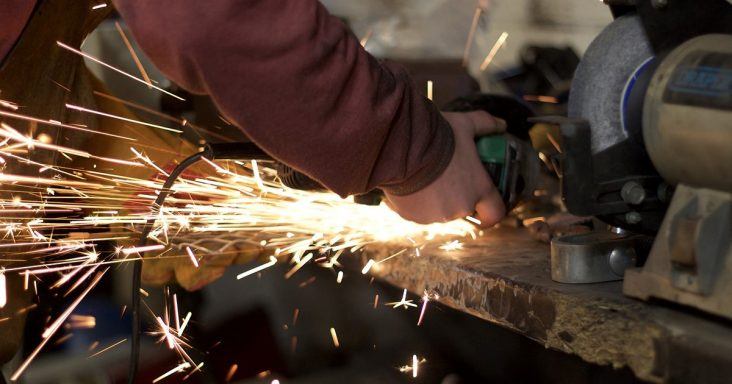Manufacturing industry contracts in May; PMI rises to 43.1%
by June 1, 2020 2:07 pm 750 views

Economic activity in the manufacturing sector contracted for the third consecutive month in May as the Purchasing Managers’ Index (PMI) rose 1.6 percentage points to 43.1%, from April, according to the Institute for Supply Management (ISM).
The ISM released Monday (June 1) the Manufacturing ISM Report on Business for May that shows the overall economy expanded after one month of contraction. A PMI of greater than 42.8% indicates the overall economy is expanding, while a reading of more than 50% shows the manufacturing economy is expanding. The April reading of 41.5%, the lowest level since April 2009, ended 131 consecutive months of growth in the overall economy.
In May, the new orders index rose 4.7 percentage points to 31.8%, the production index increased 5.7 percentage points to 33.2%, the backlog of orders index rose 0.4 percentage points to 38.2%, the employment index increased 4.6 percentage points to 32.1% and the supplier deliveries index fell 8 percentage points to 68%. The inventories index rose 0.7 percentage points to 50.4%, the prices index increased 5.5 percentage points to 40.8%, the new export orders index rose 4.2 percentage points to 39.5% and the imports index fell 1.4 percentage points to 41.3%.
Executives who provided comments for the report were cautious regarding the near-term outlook amidst three months of manufacturing disruption as a result of the COVID-19 (coronavirus) pandemic, said Timothy Fiore, chair of the ISM Manufacturing Business Survey Committee.
“As was the case in April, the PMI indicates a level of manufacturing-sector contraction not seen since April 2009; however, the trajectory improved,” Fiore said. “Demand contracted heavily again, with new orders contracting at a strong level, again pushed by new export orders contraction; both indexes contracted at slower rates, customers’ inventories indexes returning to a level considered a positive for future production, and backlog of orders index remaining in strong contraction territory, in spite of weak production during the period.”
Consumption, which comprises the production and employment indexes, contributed to a 10.3-percentage point increase to the PMI, while some executives classified as non-essential returned to work in late May, the report shows. Inputs, which includes supplier deliveries, inventories and imports, rose as a result of supplier delivery issues that were partially offset by import slowness. The delivery issues could be attributed to disruptions in domestic and global supply chains because of supplier plant shutdowns. Inventory expanded because of issues with throughput and demand weakness. Inputs contributed to a combined 7.3-percentage point decline in the PMI. Prices fell at a slower rate in May.
All manufacturing sectors were impacted by the pandemic in May, Fiore said, adding that it looks to be a month of transition with some returning to work in late May. However, demand remains uncertain, and this is expected to impact inventories, employment, imports and backlog of orders.
“Among the six biggest industry sectors, food, beverage and tobacco products remains the only industry in expansion,” Fiore said. “Transportation equipment; petroleum and coal products; and fabricated metal products continue to contract at strong levels.”
A respondent in the food, beverage and tobacco industry said “increased COVID-19 sales in the food business has really stressed our production capabilities.” In the petroleum and coal products industry, a respondent said fuel demand started to return in May as stay-at-home orders were lifted nationwide. A respondent in the nonmetallic mineral products industry said “we see a lot of positive signs, despite what’s going on. People seem to continue to be building and looking to projects for fall of 2020 and beyond. There is good optimism out there.”
